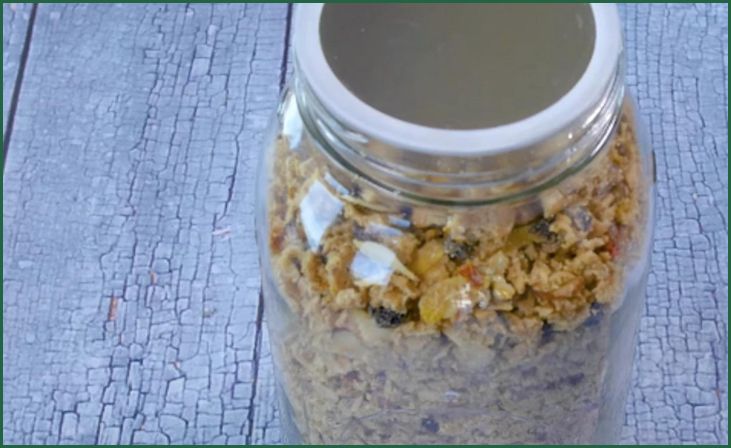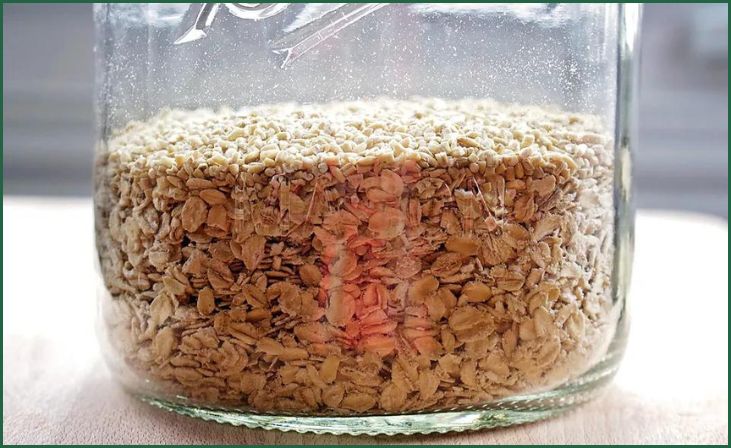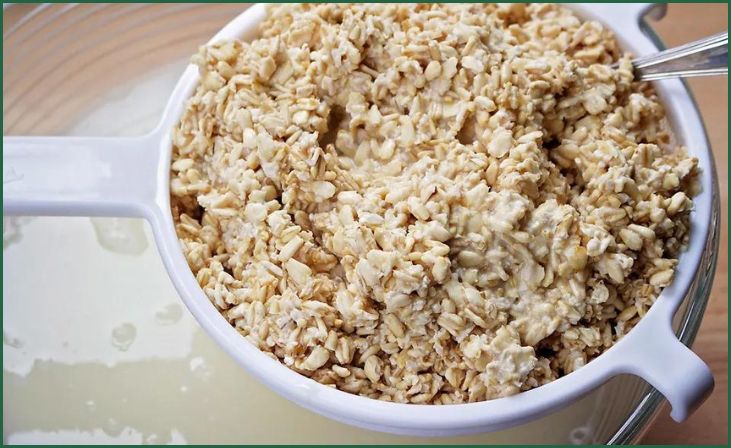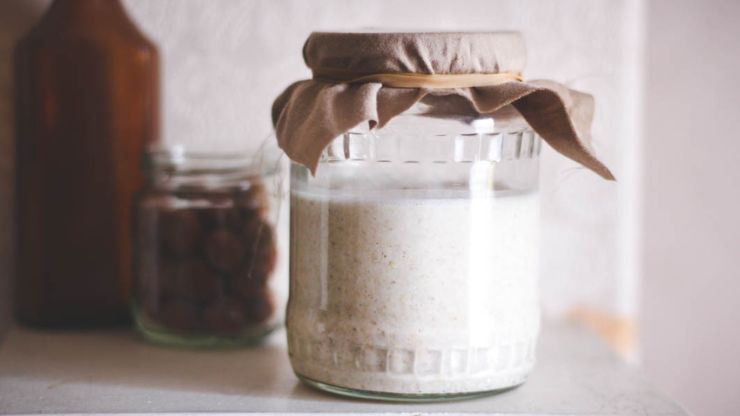In the vast landscape of nutritional choices, one term has emerged as a beacon of health and flavor— “Fermented Oatmeal.” This article takes you on a journey deep into the heart of this culinary sensation, unraveling its myriad benefits, detailing the intricate methods of preparation, and establishing why it should claim a prominent position on your breakfast table.
Fermented Oatmeal isn’t merely a dish; it’s a nutritional powerhouse that combines the wholesome goodness of oats with the transformative magic of fermentation. As we explore the enchanting world of Fermented Oatmeal, we’ll uncover the science behind its creation, the wealth of nutrients it offers, and the reasons it’s becoming a breakfast trend worth embracing.
Table of Contents
ToggleFermented Oatmeal Basics

Fermented Oatmeal: A Culinary Alchemy
Fermented Oatmeal transcends the realms of mere sustenance; it’s a transformative process that turns ordinary oats into a culinary masterpiece. This section unveils the intricacies of fermentation, unraveling the artistry behind the creation of this nutritional delight.
Also Read:- Fermented Cherry Tomato Bombs
Understanding the Process
Embark on a captivating journey through the fermentation process, where simple oats undergo a magical transformation. From the initial soaking to the enchanting dance of microbial activity, this section elucidates how fermentation elevates ordinary oats into a nutritional powerhouse.
The Nutritional Powerhouse
Fermented Oatmeal isn’t just a delectable treat; it’s a marvel of nutrition. Delve deep into its nutritional profile, uncovering a wealth of vitamins, minerals, and probiotics that classify it as a superfood.
Packed with Goodness
Explore the wholesome goodness that Fermented Oatmeal brings to your plate. Beyond its tantalizing taste, each spoonful is a treasure trove of health benefits— from immune-boosting properties to enhanced digestibility.
Health Benefits
This section unveils the holistic health benefits of making Fermented Oatmeal a part of your daily routine. Improved digestion, increased energy levels, and a comprehensive well-being approach are all covered in detail.
A Holistic Approach
Fermented Oatmeal extends beyond physical health; it’s a holistic approach to well-being. Discover how it positively impacts mental health, mood, and overall vitality, making it a cornerstone of a balanced lifestyle.
DIY Fermented Oatmeal

Crafting Your Own Morning Magic
Ready to embark on a fermentation journey? This section is your guide to crafting Fermented Oatmeal in your own kitchen. From selecting the finest oats to understanding fermentation timelines, become the mastermind behind your morning delight.
Bringing the Magic to Your Kitchen
Get hands-on with the fermentation process. Learn the art of selecting the finest oats and understanding the nuanced timelines of fermentation. This section empowers you to be the architect of your morning ritual.
Incorporating Fermented Oatmeal
Explore creative ways to incorporate Fermented Oatmeal into your meals. Whether it’s a savory dish or a sweet treat, these recipes and ideas promise a diverse and delightful culinary experience.
Recipes and Ideas
Delve into tantalizing recipes showcasing the versatility of Fermented Oatmeal. From breakfast bowls to smoothies and even desserts, there’s a recipe catering to every palate.
Don't just scroll, subscribe!
BuzzTrail's unique web-stories are the cure for boredom you've been waiting for.
Fermented Oatmeal for Beginners
Tailored for newcomers to the world of fermented goodness, this step-by-step guide makes crafting Fermented Oatmeal a breeze. It ensures that even the most novice fermenter can enjoy the process.
A Step-by-Step Guide
Navigate the initial stages of fermentation with confidence. This guide breaks down the process into easy-to-follow steps, ensuring success for beginners and seasoned fermenters alike.
Common Mistakes to Avoid
While fermentation may seem like a magical process, it’s not without its pitfalls. Learn about common mistakes and how to sidestep them, ensuring your Fermented Oatmeal journey is smooth and delightful.
Ensuring Optimal Fermentation
From temperature considerations to ingredient ratios, this section provides expert insights to guarantee your Fermented Oatmeal reaches its full potential.
Expert Opinions

Voices from the Nutritional Realm
Curious about what nutritionists and experts think about Fermented Oatmeal? Gain valuable insights into the professional world’s perspective on this emerging culinary trend.
What Nutritionists Say
Nutritionists share their thoughts on why Fermented Oatmeal deserves a place in your diet. From its impact on gut health to its nutritional content, their opinions shed light on the significance of this breakfast marvel.
Fermented Oatmeal and Gut Health
The symbiotic relationship between fermented foods and gut health is undeniable. Delve into how Fermented Oatmeal contributes to a healthy gut microbiome, unlocking a pathway to overall well-being.
Also Read:- How To Save Money With Fermented Food Scraps
A Symbiotic Relationship
Understand how the probiotics in Fermented Oatmeal foster a healthy gut microbiome. Explore the science behind this symbiotic relationship and its profound implications for overall health.
Conclusion
As we conclude our exploration of Fermented Oatmeal, it becomes evident that this breakfast sensation transcends the status of a mere culinary trend. It embodies a holistic approach to well-being, encapsulating the essence of a lifestyle that goes beyond the conventional understanding of a morning meal. Fermented Oatmeal is not just about satisfying hunger; it’s about nourishing the body, mind, and spirit.
In every spoonful of Fermented Oatmeal, one experiences more than just a delightful taste. It is a symphony of flavors, each note playing a role in creating a harmonious blend that tingles the taste buds and satisfies the palate. The alchemy of fermentation imparts a subtle tanginess, transforming the oats into a culinary masterpiece that stands out in the realm of breakfast options.
However, the allure of Fermented Oatmeal extends far beyond its delectable taste. It’s about embracing a lifestyle that prioritizes health and well-being. The nutritional richness achieved through fermentation ensures that every bite contributes to the body’s vitality. The abundance of vitamins, minerals, and probiotics not only delights the senses but also nurtures the body from within, making Fermented Oatmeal a true superfood.
FAQs
Is Fermented Oatmeal suitable for individuals with gluten sensitivity?
Is Fermented Oatmeal suitable for individuals with gluten sensitivity?
Absolutely. The fermentation process breaks down gluten, making it a safe option for those with sensitivity.
Can I use instant oats for fermenting?
Can I use instant oats for fermenting?
While it’s possible, using whole oats is recommended for a richer flavor and better texture.

